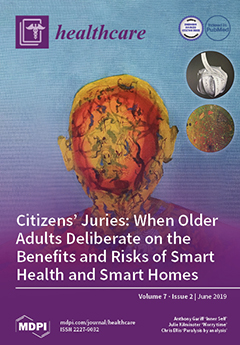Open AccessArticle
Mental Health Issues in Madhya Pradesh: Insights from National Mental Health Survey of India 2016
by
Arun Kokane, Abhijit Pakhare, Gopalkrishna Gururaj, Mathew Varghese, Vivek Benegal, Girish N. Rao, Banavaram Arvind, Mukesh Shukla, Arun Mitra, Kriti Yadav, Rajni Chatterji, Sukanya Ray and Akash Ranjan Singh
Cited by 15 | Viewed by 6663
Abstract
Background: About 14% of the global mental health burden is contributed by India. However, there exists a disparity in mental health patterns, utilization, and prioritization among various Indian states. The state of Madhya Pradesh is a low performer among Indian states, ranking lower
[...] Read more.
Background: About 14% of the global mental health burden is contributed by India. However, there exists a disparity in mental health patterns, utilization, and prioritization among various Indian states. The state of Madhya Pradesh is a low performer among Indian states, ranking lower than the national average on the Human Development Index, Hunger Index, and Gross Domestic Product (GDP). The state also performes poorly on other health-related indicators. Objectives of Study: To estimate the prevalence and patterns of mental illnesses in the state of Madhya Pradesh, India. Material and Methods: This study used the multistage, stratified, random cluster sampling technique, with selection probability proportionate to size at each stage. A total of 3240 individuals 18 years and older were interviewed. The mixed-method study that was employed had both quantitative and qualitative components. The Mini International Neuropsychiatric Interview along with 10 other instruments were used. Results: The overall weighted prevalence for any mental illness was 13.9%, with 16.7% over the lifetime. The treatment gap for all of the mental health problems is very high (91%), along with high suicidal risk and substance use in the state. Conclusions: This study provides evidence of the huge burden of mental, behavioral, and substance use disorders as well as the treatment gap in Madhya Pradesh. This information is crucial for developing an effective prevention and control strategy. The high treatment gap in the state calls for coordinated efforts from all stakeholders, including policy makers, political leaders, health care professionals, and the society at large to give mental health care its due priority. These findings also highlight the need for multi-pronged interventions rooted in health policy directed at reducing the treatment gap in the short term and disease burden in the long run.
Full article
►▼
Show Figures






